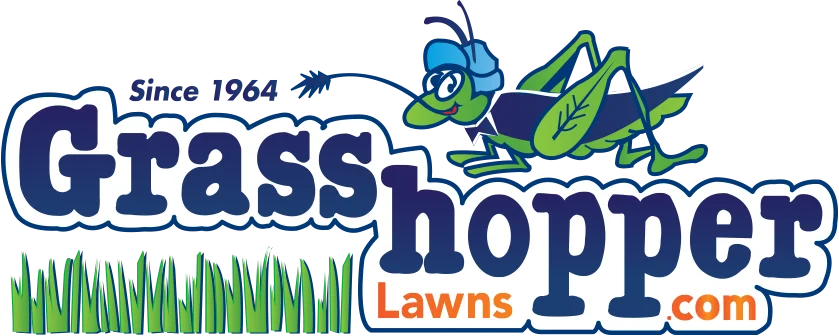6 Common Lawn Diseases
1. Leaf Spot
Image
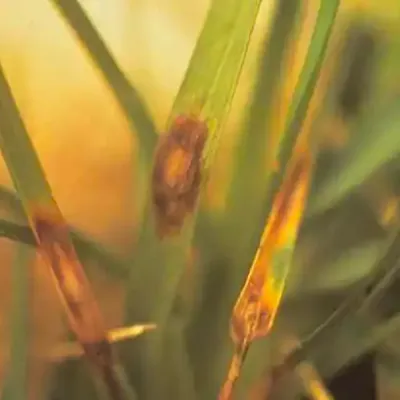
- Turf affected: Kentucky bluegrass (especially common bluegrasses), fescues, and other lawn grasses.
- Symptoms: Small lesions on leaf blades. Dark coloured spots that eventually turn light tan but remain bordered by a dark brown outer edge. Eventually, these plants die out and turn brown or straw coloured; this can occur in patches.
- Disease occurrence: Spring, typically during the time of cool, wet weather
- Management: Mow the turf high (2.5 – 3 inches) to allow the leaves to produce food for the plant and maintain a healthier lawn. Avoid excessive nitrogen fertilization in spring, as it can promote excessive growth. Once the area turns "straw-colored," apply a fertility treatment to encourage healthy turf and recovery. Manage thatch by aerating the lawn, which will also promote a deeper, healthier root system.
2. Fairy Ring
Image
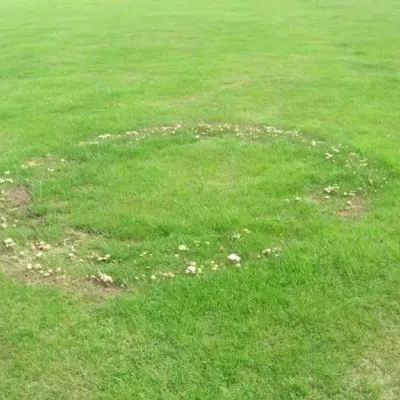
- Turf affected: All species of grasses.
- Symptoms: Large arcs or rings consisting of very green grass, dead grass, mushrooms, puffballs, or a combination of all.
- Disease occurrence: Late March to early November
- Management: Remove desiccating organic matter such as tree stumps, rotting lumber, etc., from the soil before planting. Provide proper fertilization (more nitrogen) and irrigation along with regular dethatching and/or turfgrass aerating to help prevent this disease's development. Fungicide treatment or soil removal may be necessary if the fairy ring becomes problematic. If fairy ring symptoms consist only of mushrooms and there is no zone of dark green grass, the mushrooms can be raked off and disposed of. Since some of the mushrooms are poisonous, they should be removed or destroyed. Chopping them up with the mower is adequate, but if children or pets are present, collecting the mushrooms and placing them in the garbage out of their reach is probably best. Removing the mushrooms will not weaken or control the fungus; it will improve the turf’s appearance.
3. Red Thread
Image
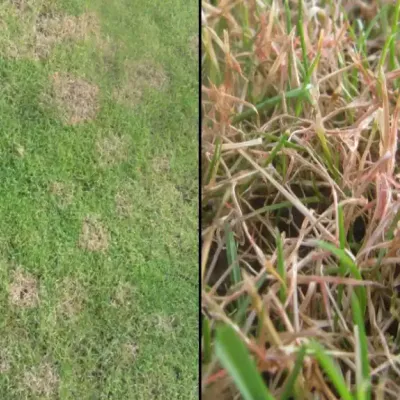
- Turf affected: All species of grass.
- Symptoms: Pinkish red threads that form around the leaf blades and bind them together. Eventually, the affected turf will turn brown. The red threads are most visible when the turf is wet, and you may see red spores on your mower and shoes.
- Disease occurrence: Early spring
- Management: The best prevention for red thread is to aerate regularly and remove thatch. Mow at proper levels, reduce shade on the turf, and follow a regular fertilization program. Collect and dispose of grass clippings when disease is present. Increased nitrogen and phosphorus fertility has been correlated to decreased red thread susceptibility. So, fertilizing regularly will eliminate one of the primary causes of red thread. Also, water deeply but infrequently early in the day to allow the leaf blade to dry off.
4. Brown Patch
Image
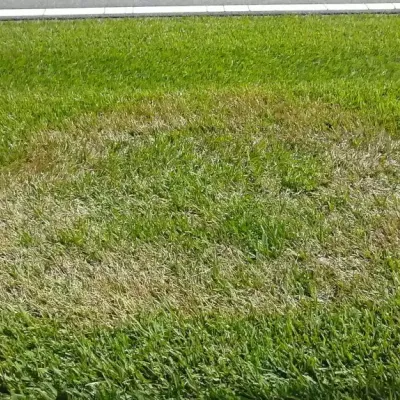
- Turf affected: Bluegrass, Fescue, and Ryegrass.
- Symptoms: Circular brown patches up to 3ft in diameter that develop during hot, wet weather. Infected leaves become dark, wilt, and die quickly when the disease is active. The entire patch will eventually become a brownish tan color.
- Disease occurrence: Mid June to early September
- Management: Avoid excessive fertilization with high nitrogen fertilizers in late spring or early summer. Reduce thatch to increase air circulation, and water deeply but infrequently early in the day to allow the leaf blade to dry off.
5. Dollar Spot
Image
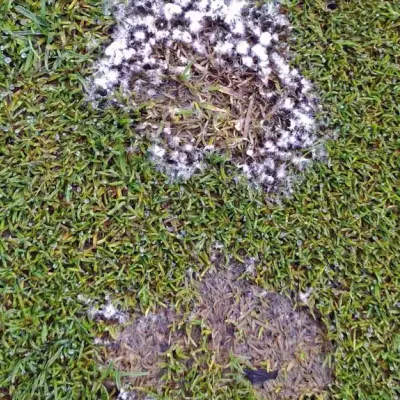
- Turf affected: Bluegrass and Ryegrass.
- Symptoms: Straw-colored patches 2 to 6 inches in diameter. Hourglass-shaped lesions with reddish-brown margins develop across the leaves.
- Disease occurrence: Late March to early November.
- Management: Drought soils and prolonged wet foliage are key factors for disease development, so water deeply but infrequently early in the day to allow the leaf blade to dry off. Regular fertilizations will help the turf to overcome the disease. Collect and dispose of grass clippings when disease is present.
6. Dog Spot
Image
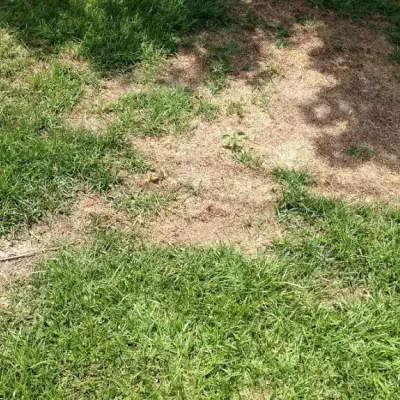
- Turf affected: All species.
- Symptoms: When your pet urinates on your lawn, it can cause the grass to burn out, and yellowish dead spots will appear due to the high nitrogen levels in their urine. It’s worse with female dogs because they typically have more potent urine and usually revisit the same spots, but this also happens with male dogs.
- Disease occurrence: Year-round
- Management: There are several ways to solve the problem of these unsightly dead spots:
- Saturate the place where your dog urinates with a large amount of water immediately after it does its duty. This will cause the nitrogen in the urine to be evenly distributed and diluted.
- Set aside one particular corner of your yard as your dog’s bathroom and train it to go there when it feels the call of nature. Cover the area with gravel or mulch so it can be easily replaced. This prevents dead spots in your lawn and helps to prevent odor from feces and urine.
- Be sure to keep your dog well hydrated in order to lower nitrogen levels in its urines naturally. Your dog should always have access to water at all times.
Professional Fungicide Treatment
If you're dealing with lawn diseases, call Grasshopper Lawns! Our team provides professional fungicide treatments to keep your lawn healthy and green. We’ll help restore your turf and prevent future issues, ensuring your lawn looks its best all year round. Contact us today!
